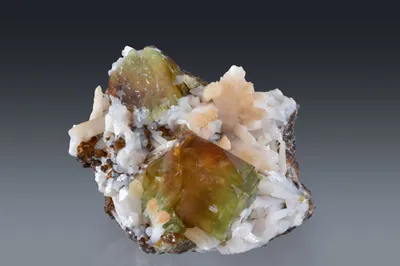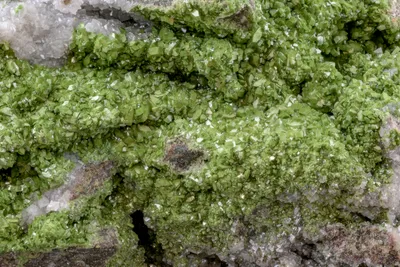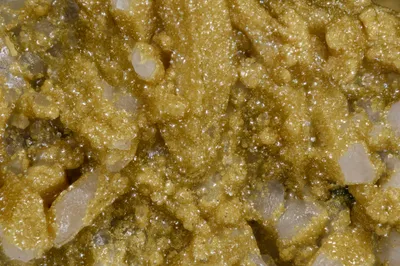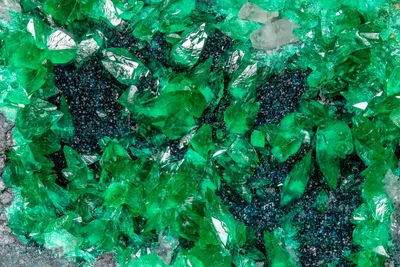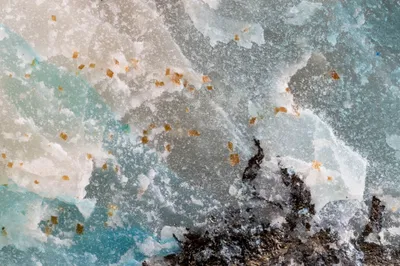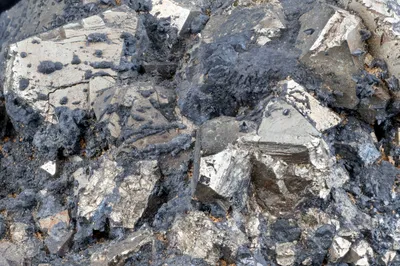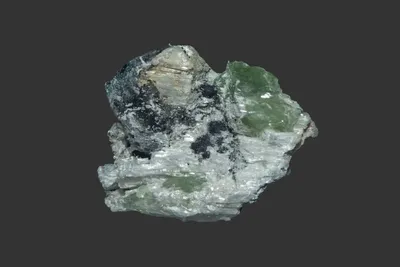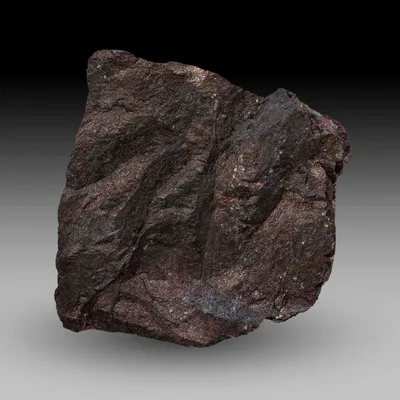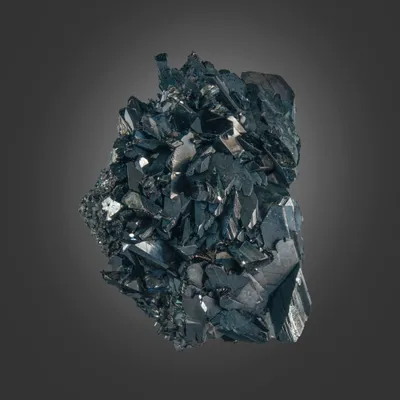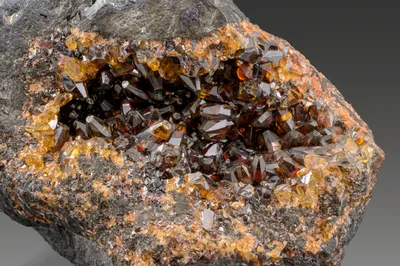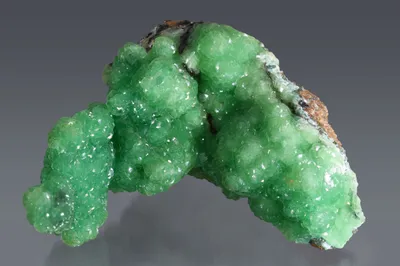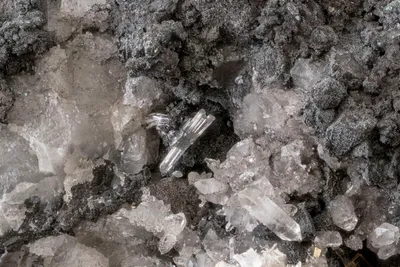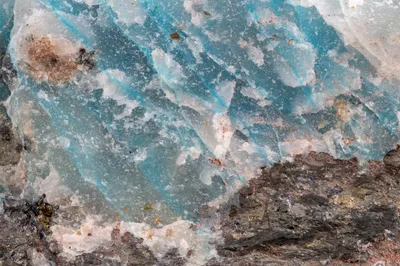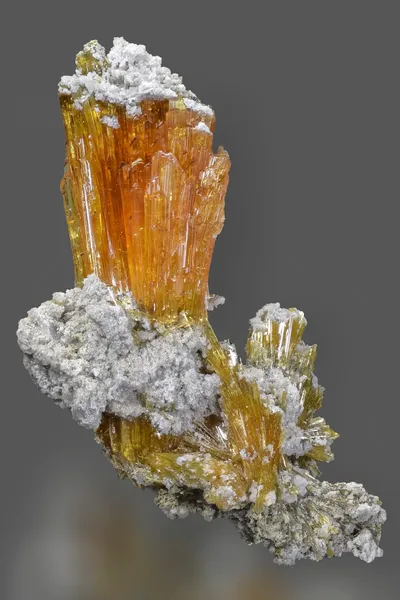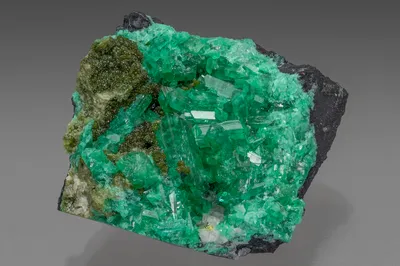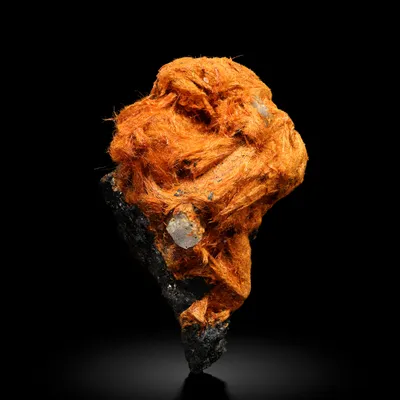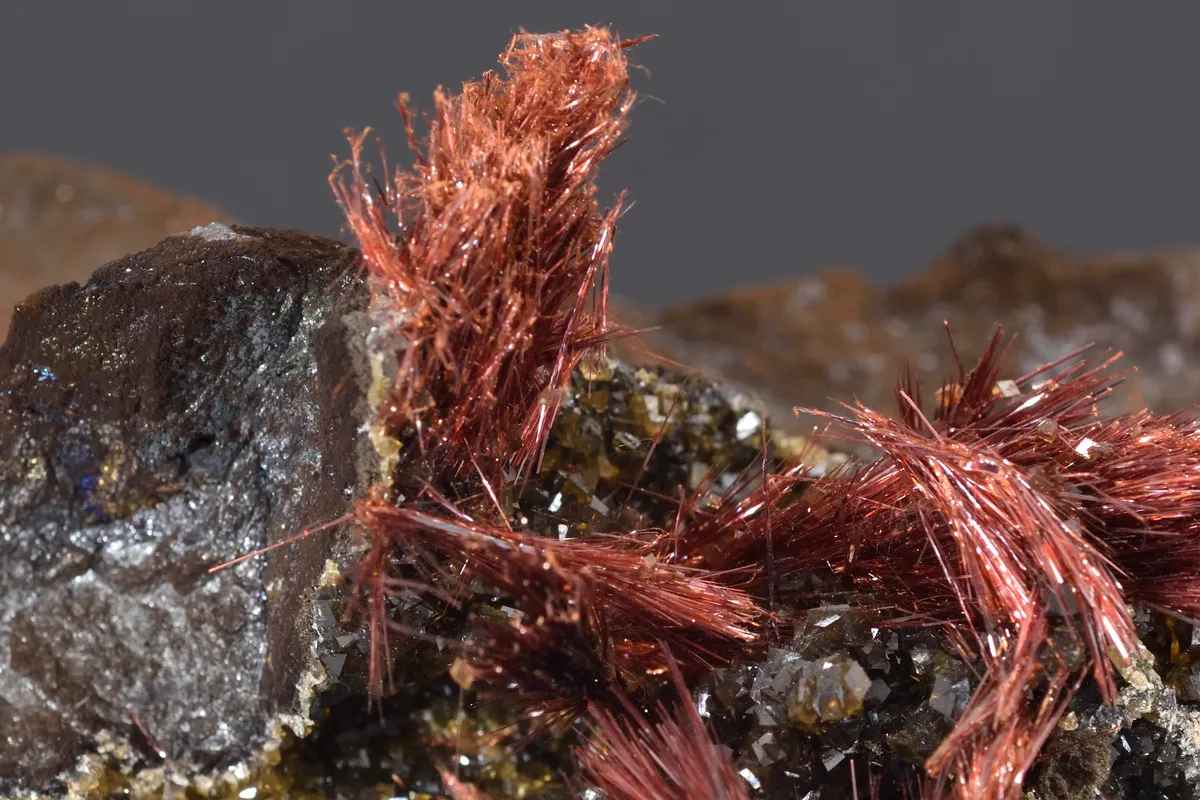
Image Credit: Malcolm Southwood photo; courtesy of the NHM London
Mineral Species
Ludlockite
Type Locality
Yes
Composition
Pb2+Fe3+4As3+10O22
Crystal System
Triclinic
Status at Tsumeb
Confirmed (type locality)
Abundance
Somewhat rare
Distribution
Second and third oxidation zones
Paragenesis
Supergene
Entry Number
Species; TSNB217
Type Mineralogy
The first ludlockite specimens were recovered from the "germanite section" of the second oxidation zone (Davis et al. 1970; Embrey et al. 1977c) in 1968 and were offered for sale by miners in Tsumeb as "hairy copper". American mineral dealers Charles Locke Key and Frederick Ludlow Smith were in Tsumeb at the time and according to Key "We knew it was something unusual and probably new, so we bought everything they offered us" (Charlie Key, pers. comm. to M. Southwood, February 2015; see Southwood 2022d). Key took the unknown mineral to Peter Embrey at the Natural History Museum in London, with the result that a new mineral, IMA 1969-046, was described and approved (Davis et al. 1970, 1972; Embrey et al. 1977c); it was named for its two discoverers, Frederick Ludlow Smith and Charles Locke Key. Type material is conserved at the Natural History Museum, London (catalogue number BM.1969, 215-216) and at Harvard University (MGMH 127927).
General Notes
According to Davis et al. (1972) and Embrey et al. (1977c) the ludlockite type specimen originated from the "germanite section" of the Tsumeb mine. Daltry (1992; citing Davis et al. 1970) interprets the "germanite section" very specifically as "30 Level". This may well be correct, but it is puzzling that 30 Level is not specified by either Davis et al. (1972) or Embrey et al. (1977c).
Key (1996) recalled that "The original discovery was one large vug in a large chunk of massive chalcocite. The piece was trimmed diligently and yielded a mere five specimens…". He mentions no other minerals in association.
Bartelke (1976; citing Davis et al. 1970 and Hintze 1975) stated that ludlockite was found on 30 Level, associated with beudantite, carminite and stromeyerite, although none of these associated minerals are mentioned either by Davis et al. (1972) or Embrey et al. (1977c). Either the beudantite – carminite association represents a separate occurrence or, more likely, beudantite and carminite were mis-identified; confused, perhaps, with siderite and smaller needles of ludlockite respectively.
According to Embrey et al. (1977c) ludlockite on the type specimen is associated only with zinc-rich siderite (as 1-3 mm crystals), on a matrix comprising bornite, chalcocite, germanite, quartz and tennantite. They also note that the ludlockite "needles", to 4 mm in length, are not in direct contact with the sulphide matrix but that they grow as "… slightly diverging bundles" out of the siderite. (In fact, the bundles of ludlockite fibres on type specimen BM.1969,215 reach 40 mm in length, and the dimension given by Embrey et al. (1977c) appears to be in error.)
Pinch and Wilson (1977) followed Bartelke (1976) in describing ludlockite as "… rust-brown to nearly red acicular crystals and fibers up to 3 cm in length. The crystals commonly penetrate small rhombs of Zn-siderite." They reiterate that "Ludlockite has been found in a cavity in the germanite ore body on the 30 level in association with carminite, beudantite and stromeyerite" and that "Some specimens labelled "chalcotrichite" in old collections have been shown to be ludlockite."
In the late 1970s ludlockite was found in the East 9 Pillar on 31 Level, as part of a complex paragenesis of rare arsenates and arsenites (Keller and Bartelke 1982). Several new minerals were described from the East 9 Pillar and ludlockite is specifically mentioned in the type assemblage for warikahnite (Keller et al. 1979b). A paragenetic sequence for the East 9 Pillar in which ludlockite is a late-formed mineral, "Sequence II/4" was figured by Keller and Bartelke (1982; page 145 - Table 1).
In the third oxidation zone, ludlockite was found on 44 Level. According to Gebhard (1999) many small specimens of ludlockite were produced, some of which were yellow in colour, and included flattened aggregates that Gebhard suggested might represent pseudomorphs of ludlockite after chalcocite. It is possible that Gebhard’s flattened yellow aggregates were, in fact, karibibite, which had still to be recognised from Tsumeb at that time.
The 44 Level paragenesis is quite different from the associations found in the second oxidation zone, with ludlockite associated with leiteite, reinerite, stolzite, and schneiderhöhnite (Gebhard, 1999).
The chemical formula of ludlockite was originally presented as (Fe3+,Pb)(As5+,As3+)O6 with the majority of the arsenic believed to be pentavalent (Embrey et al. 1977c). However, Cooper and Hawthorne (1996) showed that all of the arsenic occurs in its intermediate As (III) oxidation state; they presented a revised formula of Pb2+Fe3+4As3+10O22.
Ludlockite can be confused with karibibite, although the latter is generally a more yellowish-orange in colour and tends to form matted aggregates with less distinct individual crystals than is typical for ludlockite. Ludlockite is non-fluorescent, while type locality karibibite gives a pale yellow response to SWUV. Embrey et al. (1977) suggested that this property might differentiate the two minerals but, unfortunately, karibibite from Tsumeb is also non-fluorescent.
Keller (1984) cautions that smaller ludlockite sprays have the potential to be confused with jamesite or with weathered carminite.
Associated Minerals
adamite; arseniosiderite; arthurite (?); austinite; baryte; bendadaite; berthierine; bornite; chalcocite; claudetite (?); conichalcite; gaitite; germanite; helmutwinklerite; hematite; hidalgoite; hörnesite; johillerite; keyite; koritnigite; köttigite; leiteite; malachite; o’danielite; ojuelaite; prosperite; pyrite; quartz; reinerite; renierite; schneiderhöhnite; siderite; smithsonite; stibioclaudetite; stolzite; stottite; stranskiite; tennantite-(Fe) (?); tennantite-(Zn); tsumcorite; warikahnite; zincolivenite
Pseudomorphs
Ludlockite has been reported to form pseudomorphs after the following minerals: chalcocite (rare).

